
Japan JASDF Matsushima Air Base tsunami/earthquake damage

Responders are still dealing with the aftermath of the 8.9-magnitude earthquake and resulting tsunami that battered northeast Japan 12.03.2011.
The death toll, already approaching 700, could rise to as many as 1,300 people. However the NY Times says Japan's stringent building codes prevented many more deaths.
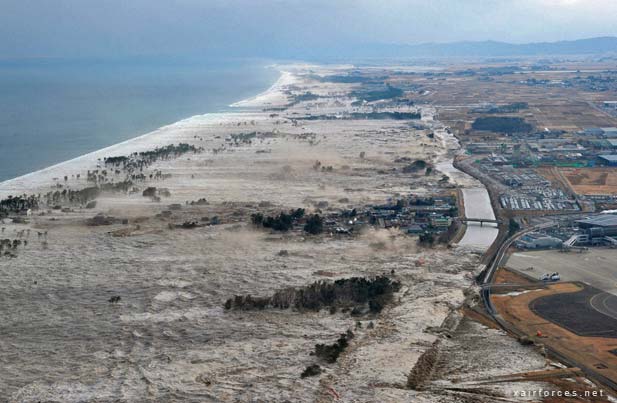 Amidst scores of aftershocks, today's news of an explosion at a Japanese nuclear reactor brings more devastation to an area still trying to cope with widespread destruction.
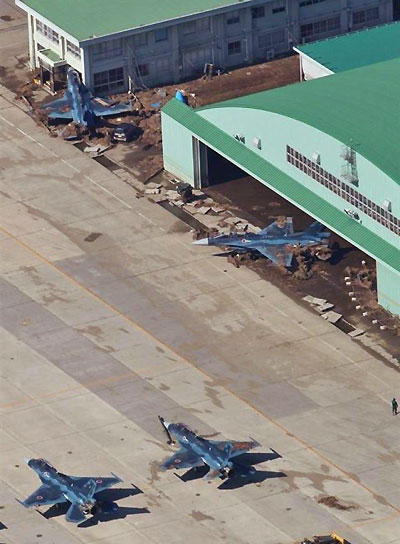 | A host of local companies are collecting donations to help with disaster relief efforts. Washington's Secretary of State's office is reminding everyone to avoid scams and make sure charity organizations are reputable. Major corporations like Boeing have been busy accounting for employees based in Japan. Microsoft has made its cloud-computing service available to governments and non-profits on the ground in Japan so disaster responders can communicate and work effectively. The company has also put together this page of ways people can help. There's always the tried-and-true option of donating to the Red Cross online or by text. Google has launched a "person finder" website to help people connect with loved ones who have been missing or displaced. Here in Washington, Comcast is making the "TV Japan" channel available for free to customers so they can watch locally produced coverage of the disaster's aftermath and recovery efforts. |
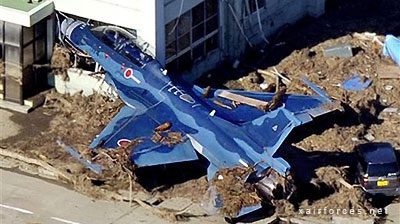 | A Japanese F-2B Fighter/Training jet plane has its nose struck in a building at Matsushima air base of the Japan Air Self-Defense Force, north-eastern Japan.
Damage to aircraft at JASDF Matsushima Air Base. During the 2011 Sendai earthquake and tsunami, the base is flooded with seawater, and 18 of its F-2 fighters and other aircraft are damaged.
|
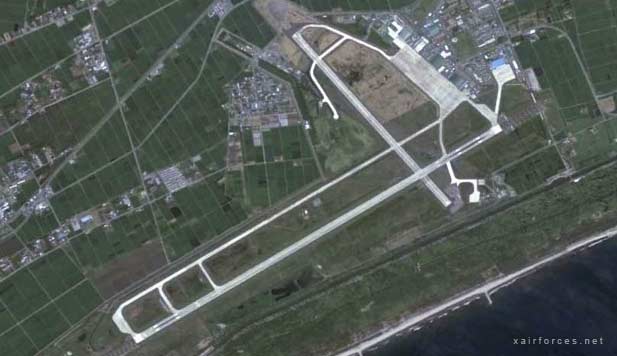
Science of the Quake Developments in the wake of Japan's triple disasters: earthquake, tsunami, nuclear. The US Geological Survey upgraded Japan's 11 March earthquake today to 9.0 from 8.9. Based on Japan's huge network of 1,200 GPS monitoring stations, the quake shifted the country's coastline some 4 meters / 13 feet to the east, and knocked Earth of its axis by 16.5 centimeters / 6.5 inches, shortening Earth's days by about 1.8 millionths of a secon The BBC reports that geographical shift will require that GPS-based driving maps be updated, and nautical charts, too, since water depths have been changed. Furthermore, much of the flooded coastline appears to have subsided permanently—or as permanently as anything ever is on this restless planet—and will not be dry land again anytime in the near future. 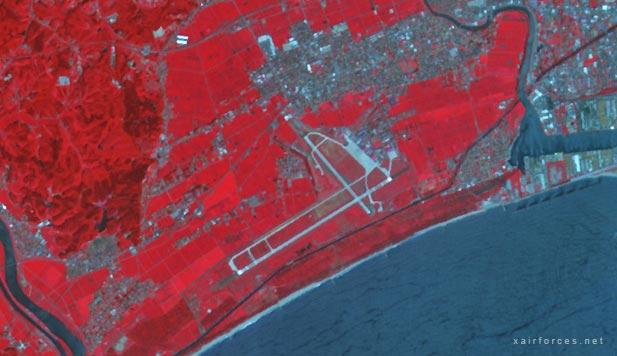
Credit: NASA Earth Observatory image created by Jesse Allen, using data provided courtesy of NASA/GSFC/METI/ERSDAC/JAROS, and U.S./Japan ASTER Science Team.
Here are before and after images of the the city of Ishinomaki in Miyagi Prefecture near the quake's epicenter. The "after" shot, above, was taken three days after the quake. Water still inundated the city. The "before" shot was from August 2008. Both are false color images: water is dark blue; vegetated land is red; dirt is tan; buildings are silver. You can see how much of the vegetation in the agricultural fields has been stripped away. This is sure to have an impact on Japan's food production, perhaps for a while, since saltwater inundation is tough on farmlands. If people in the area depend on aquifers for fresh water, those could be affected by saltwater flooding too. You can also see the extensive flooding around the Matsushima Air Base in the lower left corner of the image. It's not at all clear, at this point, just what pollution or toxins may have been unleashed from the air base and nearby industries.
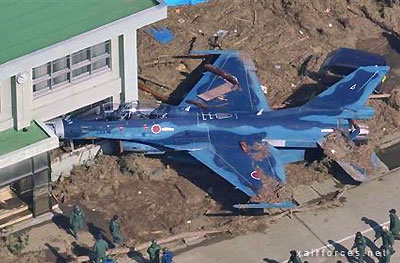 | Officers inspect Japan Air Self-Defense Force's Mitsubishi F-2 which was swept out by Friday's tsunami into a building at Matsushima base in Higashimatsushima, Iwate Prefecture, northern Japan, Monday, March 14, 2011, three days after a massive earthquake and the ensuing tsunami hit the country's east coast. |
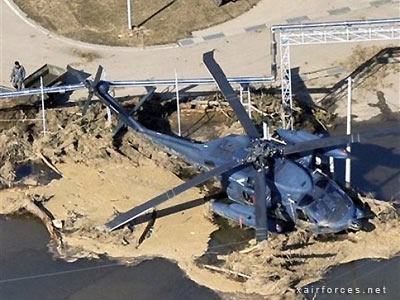 |
Japanese military helicopter sits among debris at Matsushima air base of the Japan Air Self-Defense Force, northeastern Japan, on Saturday, March 12, 2011, one day after a giant quake and tsunami struck the country's northeastern coast.
|
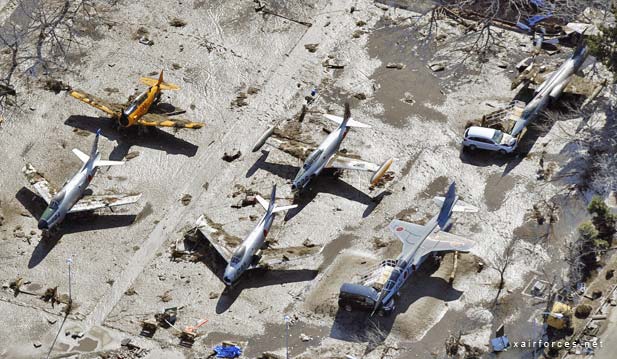
Japanese vintage military planes have dirt on their wings at Matsushima air base of the Japan Air Self-Defense Force, northeastern Japan, on Saturday, March 12, 2011, one day after a giant quake and tsunami struck the country's northeastern coast.
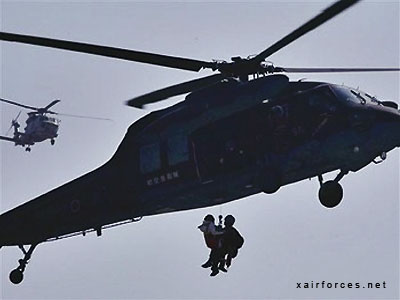 |
In this photo taken Sunday, March 13, 2011, a member of Japan Air Self-Defense Force rescues a victim in Ishinomaki, northern Japan, two days after a powerful earthquake-triggered tsunami hit the country's east coast. |
Source:Kyodo News
Photo: AP - Saturday, March 12 /13
(16.03.2011)
|